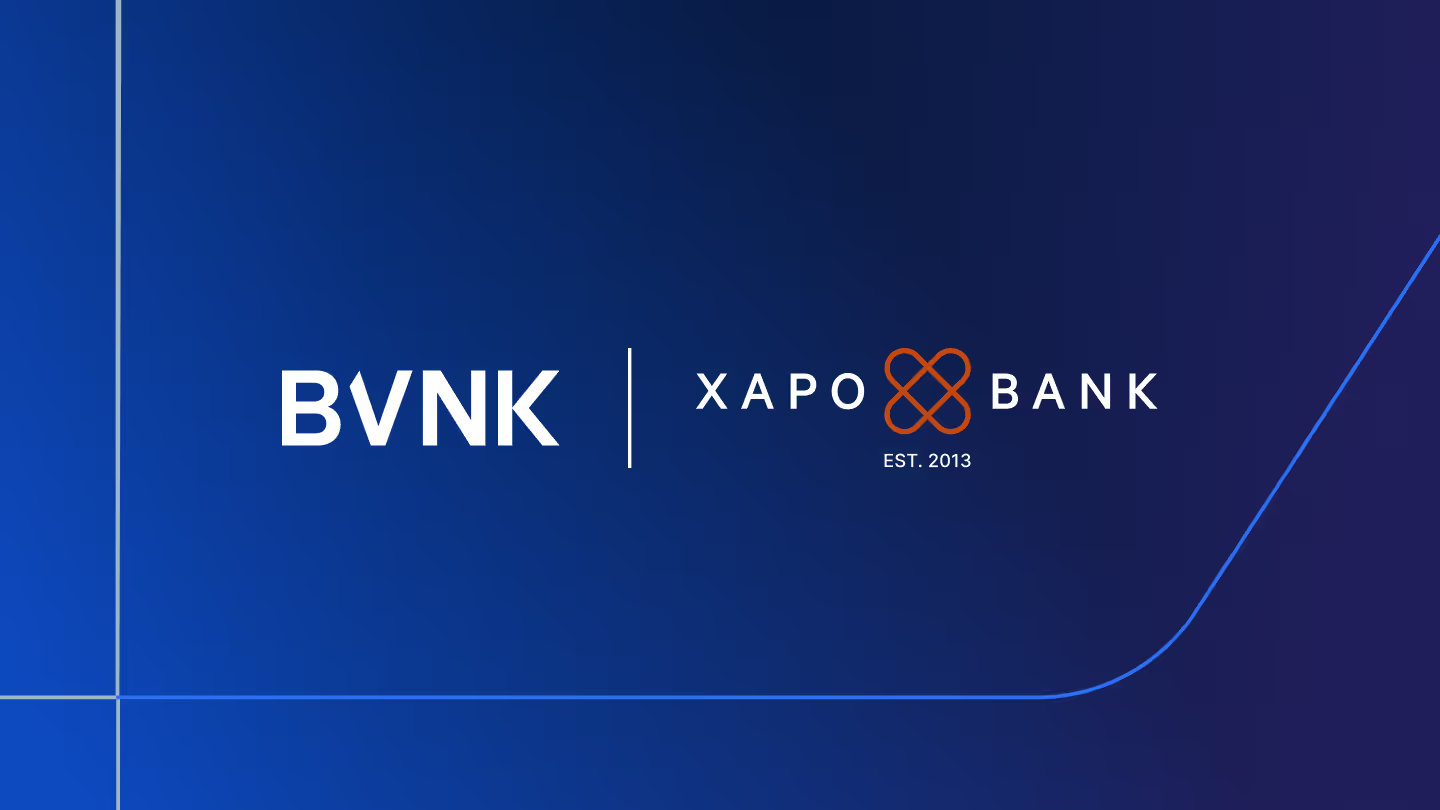What’s next for global money movement? 7 essential takeaways from Currency 2023
From the market size of B2B cross-border payments in 2030 to the opportunity for embedded stablecoin payments, we cover the top lessons from Currency LDN.
Top fintech, payments and blockchain experts from the likes of Wise, FXC Intelligence, Airwallex, Ebury, XReg Consulting and dLocal shared their learnings and predictions on the future of global movement this month at Currency LDN.
We revealed new data on the size of the global B2B payments market, debated which cross border rails would dominate, discussed risk and compliance considerations for digital assets and walked through real use cases for payments based on distributed ledger technology (DLT).
It was difficult to choose, but here are our top 7 takeaways. Full session videos with all the insights from Currency LDN 2023 will be available soon. Don’t miss them: register for free access.
1. B2B cross-border payments will grow +43% by 2030 and there's a huge opportunity for fintechs
FXC Intelligence’s Head of Commercial, Ben Disley, shared new market sizing data for global cross border payments, showing that the market will grow from $190 trillion to $290 trillion by 2030.
.png)
While wholesale makes up the biggest share right now, FXC intelligence predicts it will grow more slowly in the next seven years, while B2B cross-border payments will increase share from $39.3 trillion to $56.1 trillion. The biggest growth will come from B2B ecommerce.
Ben also pointed out that among the non-bank players, no one has more than 1% of market share globally, signalling a huge opportunity for fintechs to gain share, specialise and dominate in specific verticals.
2. Blockchains will transform how businesses handle cross-border payments

We’re on the edge of digital transformation for cross-border payments, said FXC Intelligence’s Ben Disley: “SMBs are becoming a major customer for cross-border payments and they'll only become more sophisticated in their needs… Technology is really going to transform how businesses handle payments in general.”
Ben predicted that market growth will be “accompanied by increased digitisation and by greater use of new technologies like DLT and blockchain payments.”
He added: “Despite the ‘crypto winter’, a lot of the major players are already looking at this space very heavily… We expect that to continue and for instant settlement to become more of a pressing question for large corporates and SMBs.”
3. Old and new will coexist: the future is choice

Our speakers agreed that old and new payment infrastructure will co-exist, established players like Swift and the card networks will adapt, and competition from DLT providers is a good thing.
We’ve seen fintechs in the last decade successfully build on top of the traditional banking rails to solve customer problems, said dLocal’s Chief Revenue Officer John O’Brien: “If you’re from Pakistan and working in the Middle East, you can probably send money back to Pakistan pretty efficiently using a fintech solution like Remitly.”
While those solutions work well for some use cases, DLT payment rails have gained traction in others, eg helping businesses move money to and from emerging markets (more on that in no.4).
The future then will be about choice, said Wise’s Head of European Payments & Banking, Arun Tharmarajah: "There's probably going to be a future where you can pay X and move your money instantly using one of these networks… or you can pay a bit less and wait five minutes or two days… then of course you've got other things like consumer protections which are built into card networks… some customers will be willing to pay for that, some won’t.”
4. Demand for DLT is strong in emerging markets

In emerging markets the value of DLT is already clear. For example, it can help businesses operating globally to avoid liquidity issues or expensive pre-funding as a result of slow Swift settlements.
Airwallex’s VP of Financial Partnerships, James Butland commented: “If you're just doing payouts in the country, and not collecting money on the other side, you have that liquidity trap where you need to either top up or withdraw money. That’s more of a problem in the current macro environment, as money gets more expensive over the next few years.”
Fintechs like Wise have tackled this with data science, enabling them to predict exactly where they need to send money, “down to the minute”, explained Wise’s Arun Tharmarajah. But even then, there’s an “inherent dependence on the rails”.
Payment services provider dLocal uses DLT in emerging markets. John O’Brien explained: “As an example, we recently had to go through with Amazon that we were going to use DLT in some markets and get them comfortable. It took some time, but they got comfortable with it as a mechanism to take the money out. So, we’re seeing bigger companies realise the reality of operating in markets like these…. And we’re seeing more requests for DLT and a higher level of comfortability, notwithstanding the recent bad actors in the space. ”
DLT can also be an attractive option for consumer payouts in markets where local currencies are volatile, added John: “In places like Argentina, people already say: ‘I'd prefer to take Bitcoin as a payment’ because it’s more stable versus their own currency…. so we see a lot of appetite in those markets for cryptocurrencies as a store of value.”
5. There’s an opportunity to embed DLT in fintech wallets
.jpg)
Fintechs and payment providers are thinking about how they can integrate DLT into their products.
Take international fintech, Ebury. Enrique Colin, Ebury’s SVP of Product explained: “We're interested in applications that are fintech on the front, powered by DLT on the back… specifically, using USDC stablecoin rails for some corridors. We're seeing that already happening for remittances, and on B2B flows we have specific clients coming to us with those needs.”
Enrique gave the example of a European fishing company selling fish worldwide, including in Africa: “Finding that right hand side liquidity in some jurisdictions can be a challenge for them, as can repatriating the proceeds from those sales.”
The fishing company currently uses USDC stablecoins and off ramps through central exchanges, “but we are now thinking about our own wallet,” said Enrique. “How can we start embedding some of these new rails and provide that experience where our clients see a USDC balance just like they see any other fiat currency?”
For the BVNK product team this ability to integrate DLT and traditional payment rails to meet business needs is key. As Bernhard Niebsch, BVNK’s Director of Product - Payments, said: “We want to enable businesses to accept and send stablecoins and exchange in any currency... and with our Embedded Payments product we are building an API to allow you to take all this functionality into your own products and offer it to your customers.”
6. When it comes to the risks of DLT, context matters

“Digital assets payment rails will be used for illicit funds – like cash and all payment rails,” acknowledged BVNK’s VP of Risk & Compliance Marta Lia Requeijo. But when considering the risk of DLT payments, context matters.
The rate of illicit activity on blockchains as a proportion of total transactions is lower than fiat rails, at less than 1%. Erica Stanford, fintech specialist at CMS, commented:
“Law enforcement are grateful when they've got a crypto case because it's easier to track than any other asset – there are a host of advanced analytics tools which do this, and in terms of evading sanctions or being used to fund terrorism, crypto is actually really difficult to cash out illegally.”
The risk of DLT also depends on how you’re using it, added VASPnet’s Chief Revenue Officer Elsa Madrolle:
“Are you accepting or sending payments? Are you using it in your treasury as a diversification element? Are you incentivising your employees with digital assets? How a business uses crypto is going to determine the type of risk it's facing. There are volatility and operational risks, there are AML and CTF risks which regulation is looking to address…. And it’s about finding the right tools and providers to help you mitigate the risks.”
7. This is the year of full suites of digital asset regulation… but ‘shop for jurisdictions’ carefully

Regulation around digital assets is in a formative phase.
As crypto compliance specialist Shelley Schachter-Cahm explained: “Until 2021, the only sort of regulations that crypto firms were thinking about was AML … but this is the year of full suites of regulation coming out. We have Abu Dhabi and Dubai leading the pack… and the rest of the world is catching up… In Europe, MiCA is a framework regime and we will see it being chewed over, tried and tested – it's the first iteration of many.”
With inconsistency in global regulation, comes jurisdiction shopping, VASPnet’s Elsa Madrolle commented: “We call it the sunrise issue. Jurisdictions are coming on board with regulation at different times, in different ways. My advice is don't go to the cheapest, easiest jurisdiction. Pick a reputable jurisdiction, figure out what your obligations are, then apply that risk-based approach. Come up with a compliance strategy and select your vendors carefully.”
On-demand session videos with all the insights from Currency LDN 2023 are now available. Don’t miss them – register for free access
Latest news
View allGet payment insights straight to your inbox



.jpg)






.avif)


.jpg)





